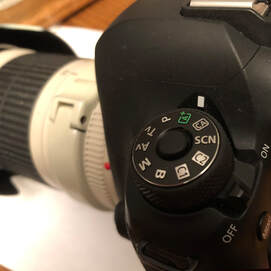 Welcome to Photography Friday on The Illusion Exotic. No, this article isn’t about the band REM or 80s music. It’s about taking your first steps into photography. Let’s say you bought or were gifted a DSLR (digital single-lens reflex) or mirrorless camera. Maybe you were just curious about the technology, or simply wanted to take nice photographs of your kids. It may be a Canon, it may be a Nikon, or a Sony or a something else. It could come with interchangeable lenses. It might be a what’s called a “cropped sensor,” “full-frame” or maybe it’s a high-end mirrorless. Maybe you don’t know, and maybe you don’t care. You’ve read some of the instructions, and you’ve watched a few YouTube videos. You’ve got a few hundred to a few thousand dollar’s worth of camera in your hands, and you haven’t managed to move that little dial on the top off of “A” yet. By “A” I mean you’re still shooting in Automatic. Everything you’ve read and watched says you should be shooting in “M”, the Manual mode. I mean, the tutorials say you’re not a real photographer if you’re shooting in Automatic, right? You want to shoot in Manual mode, or maybe one of those other complicated modes (“T” and “S” or whatever your model calls them, but its’ all so complicated, your life is busy, and you really don’t have the time to learn. You just want to take good photos. Many of the blogs, articles, photography denigrate the Automatic mode, and relegate to a place of shame. Take a deep breath and relax, and embrace the “A”, at least for now. Automatic mode takes care of the hard parts of being a photographer. The computer built inside your camera takes care of everything except pushing the button. Details change slightly from camera model to model, but in Automatic your camera handles focal point and the light triangle (aperture, shutter speed and ISO). Your expensive, high-tech camera becomes a glorified “point and shoot”. And that’s a good thing, because you paid for it. It’s okay to spend some time in Automatic before you move on to your camera’s more complex capabilities. There are two critical elements you should learn and become comfortable with before moving off of Automatic to the other modes: Subject and Composition. Subject is what or who you are photographing, and how you are trying to use the subject to elicit a reaction from the viewer. In my opinion, subject is the most important way to connect with the viewer. For example, if you are taking photos of your kids, then your kids are the subject. They elicit the reaction. Subject can immediately draw someone into your photograph, or turn them away. Powerful subjects can overcome poor composition, but usually subject and composition are woven together into a whole. Here’s a YouTube video on selecting subjects for photography. It also delves a little into composition. Composition is simply how you frame and set up your shot to draw attention to the subject. Its where and how you place your subject in the scene. Once again, there are plenty of free tutorials online that teach composition. You’ll learn tried and true techniques like “golden ratio” and “rule of thirds” that help you set up your shot. Here’s a YouTube video talking about composition. That’s the great thing about Subject and Composition, You can learn much about them without ever moving your camera dial off Automatic. Understand and get comfortable with these concepts early on and you’ll find the more technical aspects of photography less intimidating. You can also practice Subject and Composition with your camera phone. When you get comfortable The next step in your photographic journey will be lighting. To understand that aspects, you’ll have to move the dial off “A”. We’ll tackle that step next Friday. #photography #tips #photographytips #photo #cameras #canon #nikon #creativeauto #cameratutorials
0 Comments
Your comment will be posted after it is approved.
Leave a Reply. |
Archives
July 2023
Categories
All
|
 RSS Feed
RSS Feed